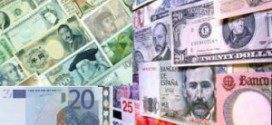While some lack the necessary resources to become rich, many have the ability, but simply do not purchase assets that have the potential to appreciate in order to eventually make them rich. Instead, money is often spent as soon as it is earned for immediate need or gratification. This article outlines how to earn and acquire assets like the rich and spend like the poor.
purchase assets that have the potential to appreciate in order to eventually make them rich. Instead, money is often spent as soon as it is earned for immediate need or gratification. This article outlines how to earn and acquire assets like the rich and spend like the poor.
- approximately 40% identify themselves as poor,
- about 44% label themselves as middle-class, and
- only about 15% consider themselves to be upper-class or rich.
The average person might think the rich were born into their money, but studies have shown only 30% of billionaires actually inherited their wealth. Instead, many rich citizens have stemmed from humble middle-class families, and have simply learned what it takes to acquire wealth.
While some lack the necessary resources to become rich, many have the ability, but simply do not purchase assets that have the potential to appreciate in order to eventually make them rich.
THE DIFFERENCE BETWEEN GOOD ASSETS AND BAD ASSETS
When one learns basic accounting in college, professors explain that a balance sheet is made up of assets, liabilities, and equity but, hardly ever, is the student taught that there is a dramatic difference between good assets and bad assets, especially in the context of earning money.
In their most basic form, good assets earn a positive cash flow while bad assets end up costing you money (or at the very least constricting your cash flow). As an example,
- a car, based on accounting principles, is typically a bad asset. Once you buy a car, it tends to start depreciating in value, not to mention it also costs you money in insurance, gas, and maintenance. More importantly, it is unlikely to generate any cash flow, unless you rent it out in one of today’s many car-sharing businesses.
- a rental property, however, can be a good asset because if rented to a responsible tenant, it will repeatedly put money in your pocket each month. Other possible examples of good assets are dividend paying stocks, bonds, and businesses because these assets have the potential to earn positive cash flow during the duration of ownership.
WHAT ASSETS DOES EACH CLASS TYPICALLY OWN?
Although the ability to earn money and create wealth is not the same for everybody due to circumstance, America provides one of the greatest platforms for people to move forward. We’ve got a stable government, a working legal system, strong employee rights, and public infrastructure that enables people with enough determination to get ahead.
The poor have a limited ability to purchase assets due to most of their income going toward basic necessities. The difficulty of having to survive on a low income may tempt some to uproot themselves from poverty through get-rich actions like gambling or purchasing lottery tickets. Very few come out ahead this way and a great majority of those already in poverty may unfortunately stay in poverty. It can be a very vicious cycle that requires a confluence of education and time.
The middle-class tend to have jobs that are consistent and pay well from week to week or month to month, which gives them the ability to purchase assets. However, simply having an ability to purchase assets may not result in a sensible investment, especially if buyers spend beyond their means. Examples of waste include buying McMansions, expensive cars on payment plans, and boats. Unfortunately for such spenders, these types of assets aren’t going to earn them money. Instead, these items are likely eating away at their cash flow each month, especially if they are purchased on unfavorable credit terms. Without a healthy cash flow, it is difficult to acquire good assets, which can contribute to keeping the middle-class in their respective societal position for life.
The rich have an entirely different story. Instead of buying bad assets that generate no revenue, the rich have the opportunity to delay gratification and purchase assets that produce income or a higher principal value down the road, perhaps on more favorable terms. This process is repeated again and again, which, in an opportunistic situation can result in their asset income exceeding their work income. The rich may continue to get richer, and it may be because they are making timely investments in the proper assets.
ASSET ALLOCATION VARIANCES BY WEALTH
It is interesting to look at how asset composition varies amongst wealth classes in the chart below.
Notice how large the principal residence weighting is for the Middle 60% compared to the weighting for the Top 1% in the chart below. When the housing downturn hit in 2008-2010, the middle class got crushed in part because they lacked the diversification of income from good assets to be able to compensate for their short-term expenses. How can the Middle 60% try to reduce their principal residence exposure to get more inline with the Next 19% and Top 1%? One possibility is purchasing smaller, more affordable homes to free up more funds for investing in financial securities.
Another significantly lower weighted asset class for the Middle 60% is business equity and other real estate. This is likely a challenging category for the Middle 60% to expand due to greater difficulties obtaining loans to launch a company, buy a rental property, and come up with cash necessary to invest in private equity. Paying down debt to improve their debt to income ratio can help with their ability to be flexible with taking advantage of opportunities that arise, such as qualifying for a loan to acquire a rental property or new business endeavor.

Source: http://www.wsj.com/articles/BL-REB-29827
THE PROCESS OF BECOMING RICH
Discipline is a key word in becoming rich. There are countless examples of people making millions of dollars and ending up broke due to a lack of discipline. The temptation to spend is ubiquitous to the point of complete exhaustion.
In order to start down the road to riches, consider some common examples from those who have already met their goal:
- Maxing out your 401k and IRA.
- Saving an additional 20% or more of your after-retirement, after-tax income.
- Invest your additional savings in a portfolio of stocks and bonds appropriate to your risk tolerance and financial objectives.
- Accumulate real assets, such as real estate property, to further diversify your net worth
- Track your net worth so you know where your money is going.
- Do not let your spending increase faster than the rate of your income growth.
[The above article is presented by Lorimer Wilson, editor of www.munKNEE.com and www.FinancialArticleSummariesToday.com and the FREE Market Intelligence Report newsletter (sample here – register here) and may have been edited ([ ]), abridged (…) and/or reformatted (some sub-titles and bold/italics emphases) for the sake of clarity and brevity to ensure a fast and easy read. The author’s views and conclusions are unaltered and no personal comments have been included to maintain the integrity of the original article. This paragraph must be included in any article re-posting to avoid copyright infringement.]
Source: *http://sparkline.motifinvesting.com/acquire-assets-like-rich/8309 (© 2014 Motif Investing, Inc. All rights reserved. Motif Investing offers flexible investment products and services to prepare you for retirement and help you build your wealth. Select motifs that suit your investment needs and let Motif Investing help you achieve your financial goals.)
Stay connected!
Register for our Newsletter (sample here)
Find us on Facebook
Follow us on Twitter (#munknee)
Subscribe via RSS
Related Articles:
1. A Love & Money Story Worth Repeating
Money is part of life and sometimes it allows you to make a decision out of love…Perhaps you save to give to a specific charity, or to help an animal or take your family on a special trip every year. It’s not the money, it’s what it adds to the fabric of your life and the good you do with it based on strong feelings and beliefs. Are you saving for what and who you love for tomorrow and most important, today? Read More »
2. How Many Billionaires Are There? How Much Wealth Do They Control?
How many billionaires are there and how much wealth do they control? Read More »
3. Who Wants to Be a Millionaire? Who Wouldn’t! Here’s How
Here are some ways you can reach millionaire status but… it’s going to take some patience. Few things of value happen overnight. Read More »
4. Are You a Millionaire? 10 Reasons You May Not Be and What to do About It
The reason you are not a millionaire (or even on your way to becoming one) is really quite simple. You probably assume it’s because you aren’t earning enough money but the truth is that, for most people, it does not matter how much money you make… [but, rather,] the way you treat money in your daily life. [Let me explain.] Words: 866
5. More Reasons You May Not be a Millionaire – Yet
Many people assume they aren’t rich because they don’t earn enough money. If I only earned a little more, I could save and invest better, they say. The problem with that theory is they were probably making exactly the same argument before their last several raises. Becoming a millionaire has less to do with how much you make, it’s how you treat money in your daily life. The list of reasons you may not be rich doesn’t end at 10. [Here are 10 more.] Words: 842
6. Do You Have What It Takes to Become Filthy Rich?
Saving money isn’t all about whether or not you know how to score screaming bargains. It has more to do with your attitude toward money. Many millionaires, in fact, have frugal ways and understanding how personal traits can influence your finances is an essential ingredient for building wealth. Do you have the 10 key traits to become rich let alone very, very rich? Words: 815
Visit wsj.com – HERE – to find their calculator which shows where your household income stands compared to others in the U.S.. $506,000 puts you in the top 1%; the much talked about $250,00 in the top 6%; $200,000 in the top 10% while an annual salary of $43,000 puts you in the top/bottom 50%. Where do you stand?
8. How the Poor, Middle Class and Rich Spend Their Money
How do Americans spend their money and how do budgets change across the income spectrum? The graph below answers these questions. Words: 240
 munKNEE.com Your Key to Making Money
munKNEE.com Your Key to Making Money

